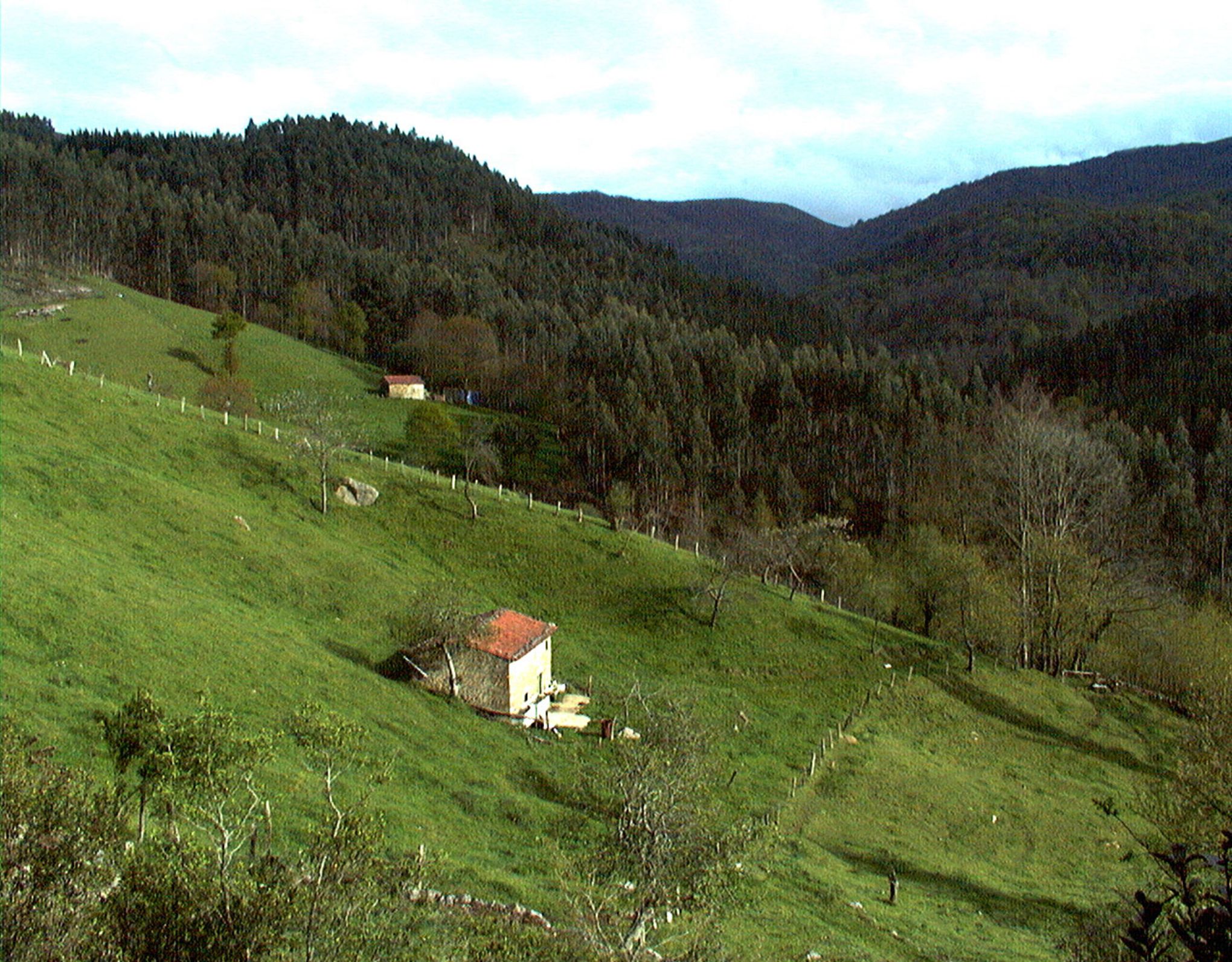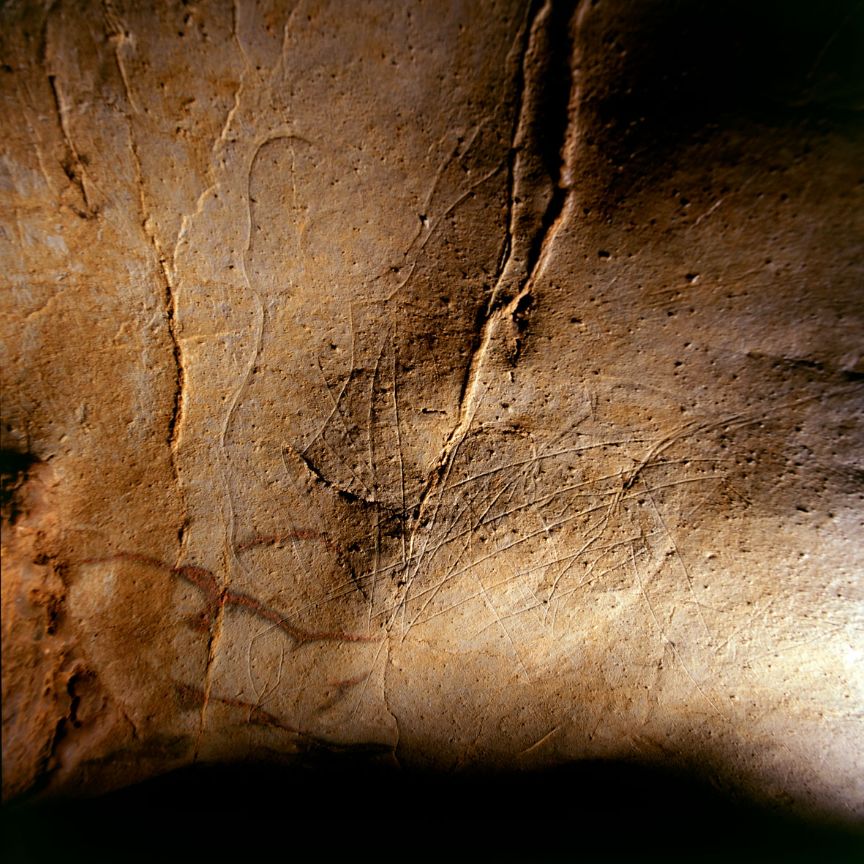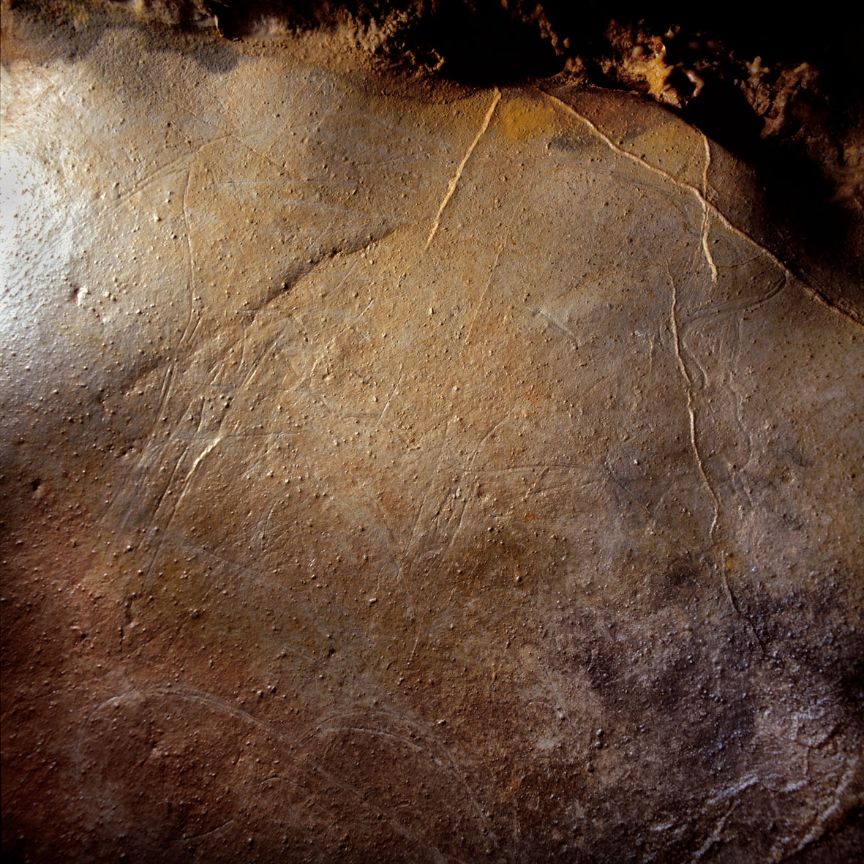Hornos de la Peña Cave

Identification of the Property
SubirTarriba, San Felices de Buelna, Autonomous Community of Cantabria
Access
On the road CA-10 (which connects the A-67 and N-623) take the turning on the south at Rivero, leading to the village of Tarriba. From here take a track to Monte Tejas as far as “Peña de los Hornos”, the location of the cave. A path and steps lead up the hillside to the cave entrance.
Geographical coordinates
UTM 30T 416520E / 4790553N Z: 222
Descripción
SubirTopographic description
The cave is located on a limestone hill overlooking the Tejas stream. It dominates a natural gap between the valleys of the Rivers Besaya and Pas. The entrance faces south, and leads to a vestibule, 11m wide and 18m long. A smaller passage 1.5m wide and 21m long leads into the interior of the cave. It reaches two larger chambers, where the cave continues some 20m to the right before turning left for a further 25m.
Date of Discovery
The archaeological deposit and prehistoric art were discovered in 1903 by H. Alcalde del Río.
Archaeological research
The archaeological deposit, in the narrow passage leading off the vestibule, was dug in 1909 and 1910 by the Institut de Paléontologie Humaine, under the direction of H.Obermaier. The cave was used a shelter during the Spanish Civil War (1936-1939), which resulted in certain damage to the art. In the latter part of the last century, the most important developments were the study of the cave art carried out by Peter Ucko, and studies made of the deposit by Leslie G. Freeman, Federico Bernaldo de Quirós, Lawrence Straus and Pilar Utrilla, among others.
 Pulse para ampliar
Pulse para ampliar
The stratigraphic sequence found in the deposit is:
- Upper level: recent Prehistory
- Level B: middle Magdalenian
- Level C: middle Solutrean
- Level D: evolved Aurignacian
- Basal level: Quina-type Mousterian.
Artistic contents: paintings and engravings
The cave contains two different ensembles of art. The vestibule has a series of engravings drawn with a single, deep line, representing a bison and a horse among other non-figurative lines. These can be assigned to archaic phases of Palaeolithic cave art. The interior of the cave has another ensemble, consisting above all of numerous engravings. The first chamber has a stag engraved with fine lines, and an auroch, drawn with a fingertip in a clay surface. Some small chambers on the left contain the only painting in the cave, a horse in black. The route to the right has figures of a deer, an ibex and two horses. The greatest concentration of art is found in the two final chambers. The first has engravings of several bison, a horse’s head and a possible reindeer. Some of these show great anatomical details of the animals, and the most complete figure is a bison, drawn with all four legs, a horn, an eye and an ear. Lines in front of its mouth may represent its tongue or its steaming breath. This detail is typical of bison at other sites, such as Altamira. The end chamber has a large composition with four horses, a bison, a possible snake and the antlers of a deer. Some of the horses are much more complete than others, and they may have four legs, or only two, or be partial figures of the fore-quarters or only the head. A small rift at the back of chamber has the cave’s best known figure, an anthropomorph standing on both feet, with one arm raised, and a possible tail added to its buttocks. The art inside the cave is generally supposed to be more recent than the figures in the vestibule, and attributed to the early or middle Magdalenian. It is however heterogeneous in style and technique, with numerous superimpositions, and cannot be strictly synchronic. There is no reason why some figures, particularly those in soft clay surfaces, could not be as old as the exterior art.
 Pulse para ampliar
Pulse para ampliar
Bibliography
SubirALCALDE DEL RÍO, H., BREUIL, H., SIERRA, L. 1911. Les Cavernes de la Région Cantabrique (Espagne). Monaco: Impr. Veuve A. Chêne.
BERNALDO DE QUIRÓS, F. 1982. Los inicios del Paleolítico superior cantábrico. Madrid: Ministerio de Cultura (C.I.M.A. Monografías 8).
BREUIL, H., OBERMAIER, H. 1912. Les premiers travaux de l’Institut de Paléontologie Humaine. L’Anthropologie XXIII: 1-27.
STRAUS, L.G. 1983. El Solutrense cantábrico. Una nueva perspectiva. Madrid: Ministerio de Cultura (C.I.M.A. Monografías 10).
UTRILLA, P. 1981. El Magdaleniense inferior y medio en la costa cantábrica. Madrid: Ministerio de Cultura (C.I.M.A. Monografías 4).
ONTAÑÓN PEREDO, R. 2018. 10 Cuevas Patrimonio Mundial en Cantabria. Santander: Consejería de Educación, Cultura y Deporte - Gobierno de Cantabria / Asociación de Amigos del MUPAC.



